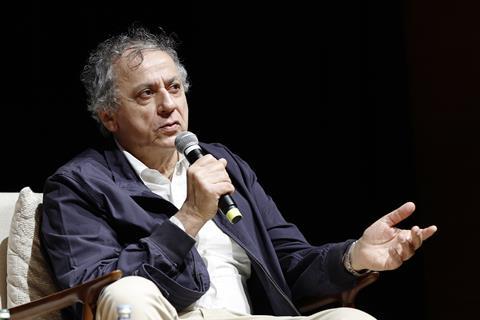
Darius Khondji says Ari Aster’s Eddington is going to be “very different from his other movies”, as he prepares to begin colouring the film ahead of what he claims will be a Cannes launch.
The acclaimed French-Iranian cinematographer spoke to Screen after his masterclass on Saturday, April 5 at the Doha Film Institute’s Qumra lab.
With a cast including Joaquin Phoenix and Emma Stone, Khondji says Eddington has “actors that I was dreaming to work with again.”
“It’s going to be very different from his other movies,” said Khondji. “Ari is a deep, strong filmmaker. He has the talent, or the perception of things, that Ingmar Bergman and Roman Polanski had. His quest for the way he wanted the story to be told – you could feel the influence of these filmmakers.”
Ahead of the Cannes lineup announcement on Thursday, Khondji said Aster’s film has secured a spot on the Croisette, and he hoped it would be in Competition.
Written and directed by Aster, Eddington follows a small-town New Mexico sheriff who has higher aspirations. The film shot one year ago in New Mexico, with Pedro Pascal, Austin Butler and Micheal Ward also among the cast.
The film was shot in a 1.85:1 aspect ratio, against external pressures, said Khondji. “Anyone would’ve shot it in Cinemascope (2.35:1) in long format; we decided to do it in 1.85:1.”
Khondji confirmed that he will start the digital intermediate process on Eddington in a few days alongside colorist Yvan Lucas, with whom he first worked on 1991 crime comedy Delicatessen and reunited on multiple films since including David Fincher’s Se7en.
Marty Supreme
Khondji teased another of his upcoming projects, Josh Safdie’s Marty Supreme starring Timothee Chalamet as table tennis champion Marty Mauser. Philippe Petit, the French highwire artist who was the subject of Oscar-winning documentary Man On Wire, has a small part in the film according to Khondji; as one of what the cinematographer says are 140 different characters in the film.
Khondji said Marty Supreme “will be ready at the end of the year”, after he works with Lucas again on the colouring from July. The film is going to be “unlike anything at the moment.”
Working with just Josh Safdie as director having worked with Josh and Benny Safdie on Uncut Gems “didn’t make a difference,” Khondji said. “Josh has incredible energy to make films, like no-one else I’ve experienced. In every shot, he surprises you of what’s going to come. He works like this - it’s continuous inspiration, intuition. He goes somewhere with the actors, with the camera, that you don’t expect. It’s not always easy, but the result is special.”
He detailed how he and Safdie pushed the negative of the film to increase its grain. “The grain is like the skin, it’s a very important thing on film,” said Khondji. Both Eddington and Marty Supreme are produced by A24, which will release both films in the US.
The cinematographer is mulling over another project for later this year, which is too soon for him to discuss – “I’m not sure myself.”
Digital excess
In his two-hour Qumra masterclass session, Khondji took aim at the over-digitisation of filmmaking – especially digital intermediate, the digital post-production process that has been in wide use since the 1990s, which he described as “very dangerous”.
“We were all looking for it [originally],” said Khondji. “But when we started having this, I was really put back from it. With [Sydney Pollack’s 2005 feature] The Interpreter, we did an early digital intermediate, and I didn’t like it. I didn’t like the process, I thought we were losing ourselves, losing our minds into something that is not real. I asked Sydney ‘can we re-do it chemically?’, and he said ‘do what you think is best for the film.”
“Digital intermediate is a very dangerous process,” said Khondji. “You should be careful not to push the film – the colours, the blacks. Freedom is wonderful artistically, but you have to be careful with it – the same with everything.”
Some directors are moving away from digital technologies and back to shooting on film, Khondji believes. “It’s different; film has an interesting painterly quality. It’s very beautiful on skin tone. When I shoot film, I have a tendency to push the negative to have more texture.”
He had further disdain for 3D, stating “I would turn down a movie in 3D.”
“We make the illusion of 3D all the time, when directors make film,” said Khondji. “I don’t like the 3D thing, it’s terribly unappealing, ugly.” He did concede there are “some exceptions”, such as James Cameron’s first Avatar film.
“Technique is a very sterile thing,” Khondji said earlier in the talk. “The stories [he has filmed] were always led by a script – by a story that is told to me by a director.”
He also said he does not like Imax, and that the head of Imax asked him and director Bong Joon Ho if they could shoot Mickey 17 in an Imax-friendly format. “We wanted to do the release in 1.85:1,” said Khondji. “We didn’t want to give in to have a special release commercially for Imax.”
He again conceded that there are exceptions, such as Christopher Nolan’s Dunkirk and Oppenheimer, but stated that the best Imax-projected films are those shot for the format. “Imax and 3D are all sensationalism,” continued Khondji. “I like films like (fellow Qumra master) Walter Salles’s films – it’s true stories.”
The cinematographer said he was not especially fond of his work on Richard Loncraine’s 2004 romantic comedy Wimbledon, preferring Luca Guadagnino’s Challengers from last year among tennis films.
“I love tennis; I don’t think we did it really well,” said Khondji. “I found it difficult shooting tennis.”
He spoke more fondly about working with Bong on 2017 title Okja, about the eponymous pig-like beast, which was computer-animated for the film. “Bong and his young crew preparing the film were talking about Okja like she was alive – but she was not around,” said Khondji. “It was very strange for me because I was not used to it. Little by little, they really made me believe that she was alive, she was here. We put her on screen – now she exists.”
Khondji also told Screen he would “never close the door” to making another musical, 29 years after shooting Evita starring Madonna. “After Evita I turned down a few big musicals; I loved the experience with Alan Parker but I didn’t want to do another,” said Khondji. “Now I don’t want to close doors because I think it will come back again.”
The Qumra masterclass programme continues with Filipino filmmaker Lav Diaz, speaking tomorrow morning (Sunday, April 6).



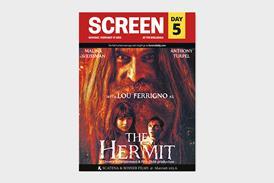
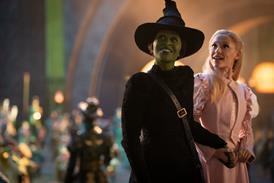
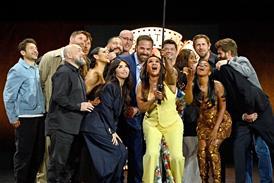



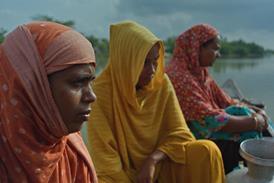
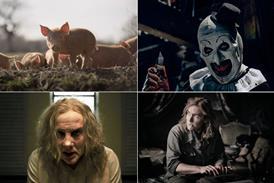

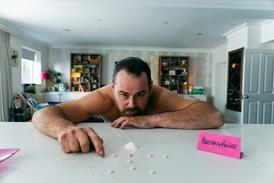
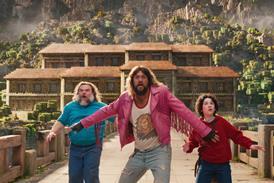
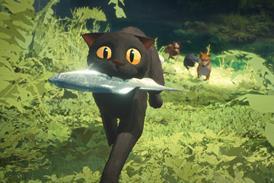

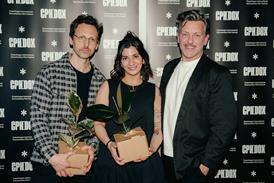
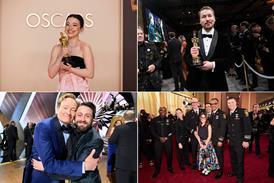







No comments yet